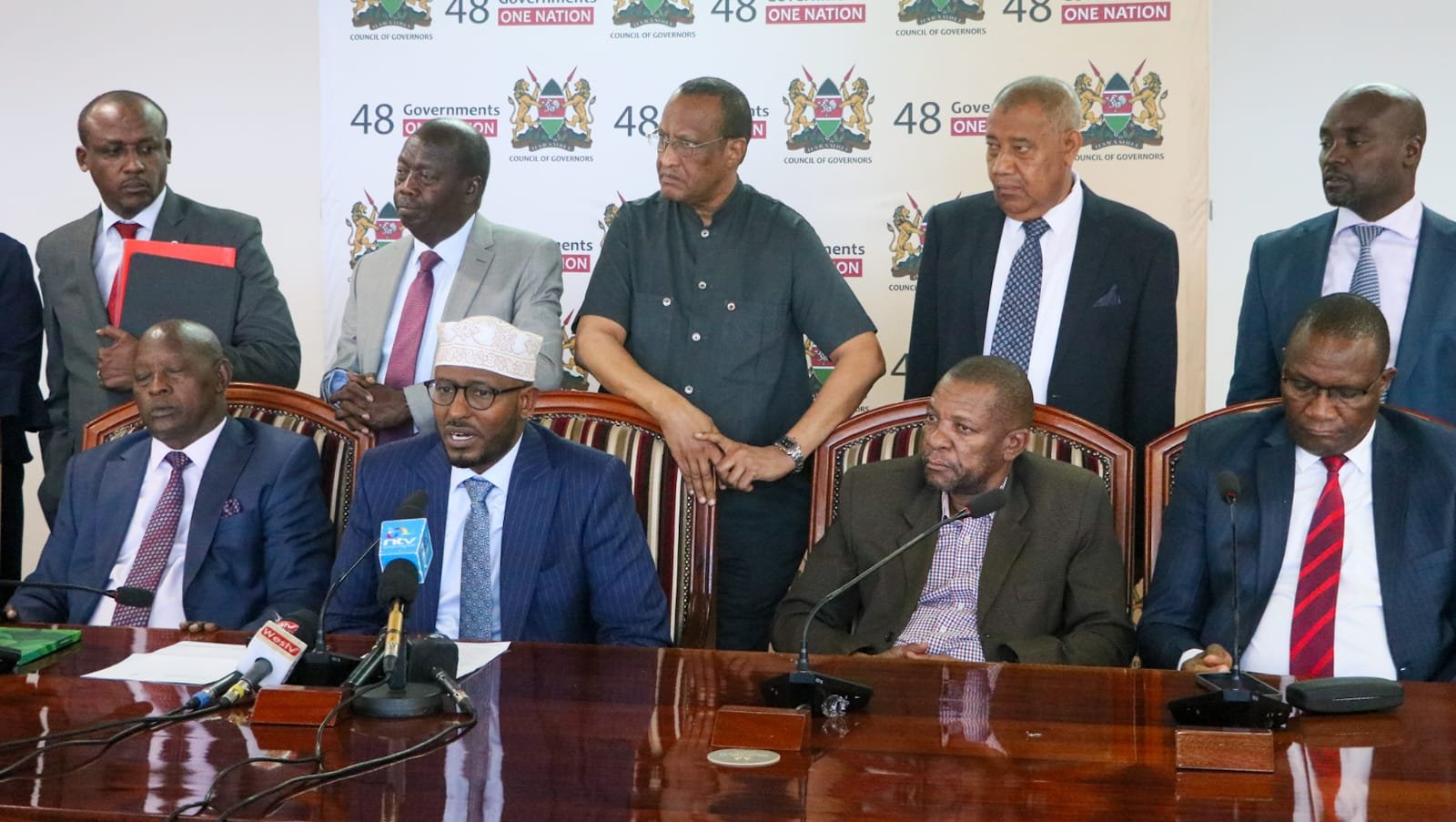In a groundbreaking ruling, the High Court of Kenya has declared that the failure of the national and county governments to allocate at least 30% of their budgets to development expenditures is unconstitutional and unlawful. This decision follows a petition filed by the Kenya Human Rights Commission (KHRC) in 2024, challenging the government’s recurrent spending habits that have stifled economic growth and infrastructural development in the country.
A three-judge bench comprising Justices Teresia Matheka, Rayola Olei, and Robert Limo ruled that the government must comply with its legal obligation to allocate sufficient funds to development projects. The court has given the National Treasury and 20 county governments three months to report on their compliance with this directive.
This ruling is expected to have far-reaching implications, particularly in ensuring that taxpayer money is used to improve infrastructure, education, healthcare, and other essential services that directly benefit Kenyans.
Background: The Underfunding of Development Projects
Kenya’s public finances have been a subject of scrutiny, with the government historically allocating the bulk of its revenue to recurrent expenditures, such as salaries, allowances, and administrative costs. This trend has limited funding for critical development initiatives, leading to incomplete infrastructure projects, poor healthcare services, inadequate schools, and a struggling agricultural sector.
According to the Controller of Budget’s report, the national government allocated only 17% of its revised gross budget to development expenditures in the first six months of the 2023-24 financial year, significantly below the required 30%.
At the county level, the situation is even more concerning. Many counties that were named in the lawsuit, including Kisii, Nairobi, Machakos, West Pokot, Nyandarua, Lamu, Nyeri, Samburu, Taita Taveta, Makueni, Meru, Kericho, Baringo, and Isiolo, allocated less than 10% of their budgets to development projects.
Comparing historical data, 16 counties failed to meet the 30% threshold in the 2022-23 financial year, and an alarming eight counties had failed to meet this requirement for four consecutive years from the 2018-19 to 2021-22 fiscal years.
The Court’s Ruling and Its Implications
The judges ruled that the failure to allocate the required 30% of budgets to development violates the constitutional rights of Kenyan citizens, particularly in the areas of economic and social development. The court emphasized that government spending must prioritize long-term public welfare rather than being consumed predominantly by administrative and recurrent costs.
The ruling directed the National Treasury and county governments to:
- Reconfigure their budgets within three months to ensure compliance with the 30% development allocation rule.
- Submit a compliance report detailing how the revised budgets allocate funds for critical development projects.
- Establish a mechanism for tracking and enforcing budget compliance, to prevent future violations.
Failure to comply with these orders could result in legal consequences, including contempt of court charges, against responsible officials.
What is Considered Development Expenditure?
Development expenditures typically include spending on:
- Infrastructure projects such as roads, bridges, water supply systems, and public transportation.
- Education sector investments, including building new schools, upgrading existing institutions, and expanding access to educational materials.
- Healthcare improvements, such as constructing hospitals, equipping medical centers, and training healthcare professionals.
- Agriculture and food security programs, aimed at improving irrigation, boosting agricultural productivity, and supporting farmers.
- Technology and innovation initiatives, such as digitization of government services and investments in the tech ecosystem.
By ensuring that 30% of the budget is directed towards these areas, Kenya can accelerate economic growth, create jobs, and improve the quality of life for its citizens.
Why This Ruling is Important
The decision to enforce the 30% rule is seen as a victory for accountability and transparency in government spending. It aligns with the Kenyan Constitution’s vision for equitable development, as outlined in the Public Finance Management Act and the County Government Act.
The Kenya Human Rights Commission (KHRC), which filed the petition, argued that the underfunding of development projects undermines economic progress and deepens inequalities. The court agreed, stating that Kenyans are entitled to adequate infrastructure, quality healthcare, and better educational facilities, all of which depend on proper budget allocations.
For years, both the national and county governments have prioritized recurrent expenditures at the expense of development, resulting in:
- Delays in critical infrastructure projects such as roads, electricity, and water supply systems.
- Overburdened hospitals and underfunded public schools, affecting the quality of essential services.
- A lack of job creation and business opportunities, since economic growth is heavily dependent on infrastructure and industrial development.
With this ruling, the government is now under strict legal obligation to ensure that at least 30% of revenue is channeled toward development projects.
Challenges in Implementing the 30% Development Rule
While the ruling is a significant step forward, implementing it will come with several challenges, including:
- Limited Revenue Streams
- Many counties depend heavily on allocations from the national government, with limited own-source revenue collection. Increasing development spending may require counties to enhance revenue collection mechanisms and reduce wasteful spending.
- Corruption and Mismanagement
- One of the biggest threats to development budgets in Kenya is corruption. Even when funds are allocated to projects, mismanagement, embezzlement, and inflated contracts often hinder successful implementation.
- The court ruling should be accompanied by strong anti-corruption measures to ensure funds reach the intended projects.
- Resistance from Government Officials
- Some county governments may resist reallocating funds away from recurrent expenditures, arguing that salaries and operational costs are already high.
- It will require political will and enforcement mechanisms to ensure compliance.
- Delays in Project Implementation
- Even when funds are available, bureaucratic red tape, procurement issues, and inefficiencies often delay project execution.
- There is a need for better planning, monitoring, and evaluation to ensure that funds are utilized effectively.
What Happens Next?
In the next three months, the National Treasury and county governments will be required to restructure their budgets and submit progress reports to the court. The Controller of Budget will play a crucial role in ensuring compliance by monitoring expenditure patterns.
- Public pressure and oversight from civil society organizations, such as KHRC, will be critical in holding the government accountable.
- The Ethics and Anti-Corruption Commission (EACC) and the Auditor-General’s office may also step in to investigate cases where funds are mismanaged or not properly allocated.
Conclusion: A Step Toward Economic Transformation
The High Court’s decision mandating at least 30% budget allocation to development is a major milestone in Kenya’s quest for sustainable economic growth. By prioritizing infrastructure, healthcare, education, and technology, the ruling paves the way for better public services, improved job opportunities, and stronger economic resilience.
However, for this ruling to have real impact, it must be fully enforced, and county governments must demonstrate genuine commitment to redirecting funds toward development. Citizens, civil society groups, and oversight agencies must remain vigilant to ensure compliance.
If properly implemented, this ruling could mark the beginning of a new era in Kenya’s public finance management, one where government spending is more accountable, efficient, and focused on long-term growth rather than short-term political gains.
Final Thought
This decision is not just about figures in a budget—it is about ensuring that Kenyan citizens receive the services and infrastructure they deserve. With proper implementation, it could significantly improve the quality of life, economic stability, and future development prospects of the nation.
Ready to take your career to the next level? Join our dynamic courses: ACCA, HESI A2, ATI TEAS 7 , HESI EXIT , NCLEX – RN and NCLEX – PN, Financial Literacy!🌟 Dive into a world of opportunities and empower yourself for success. Explore more at Serrari Ed and start your exciting journey today! ✨
photo source: Google
By: Montel Kamau
Serrari Financial Analyst
10th January, 2025
Article, Financial and News Disclaimer
The Value of a Financial Advisor
While this article offers valuable insights, it is essential to recognize that personal finance can be highly complex and unique to each individual. A financial advisor provides professional expertise and personalized guidance to help you make well-informed decisions tailored to your specific circumstances and goals.
Beyond offering knowledge, a financial advisor serves as a trusted partner to help you stay disciplined, avoid common pitfalls, and remain focused on your long-term objectives. Their perspective and experience can complement your own efforts, enhancing your financial well-being and ensuring a more confident approach to managing your finances.
Disclaimer: This article is for informational purposes only and does not constitute financial advice. Readers are encouraged to consult a licensed financial advisor to obtain guidance specific to their financial situation.
Article and News Disclaimer
The information provided on www.serrarigroup.com is for general informational purposes only. While we strive to keep the information up to date and accurate, we make no representations or warranties of any kind, express or implied, about the completeness, accuracy, reliability, suitability, or availability with respect to the website or the information, products, services, or related graphics contained on the website for any purpose. Any reliance you place on such information is therefore strictly at your own risk.
www.serrarigroup.com is not responsible for any errors or omissions, or for the results obtained from the use of this information. All information on the website is provided on an as-is basis, with no guarantee of completeness, accuracy, timeliness, or of the results obtained from the use of this information, and without warranty of any kind, express or implied, including but not limited to warranties of performance, merchantability, and fitness for a particular purpose.
In no event will www.serrarigroup.com be liable to you or anyone else for any decision made or action taken in reliance on the information provided on the website or for any consequential, special, or similar damages, even if advised of the possibility of such damages.
The articles, news, and information presented on www.serrarigroup.com reflect the opinions of the respective authors and contributors and do not necessarily represent the views of the website or its management. Any views or opinions expressed are solely those of the individual authors and do not represent the website's views or opinions as a whole.
The content on www.serrarigroup.com may include links to external websites, which are provided for convenience and informational purposes only. We have no control over the nature, content, and availability of those sites. The inclusion of any links does not necessarily imply a recommendation or endorsement of the views expressed within them.
Every effort is made to keep the website up and running smoothly. However, www.serrarigroup.com takes no responsibility for, and will not be liable for, the website being temporarily unavailable due to technical issues beyond our control.
Please note that laws, regulations, and information can change rapidly, and we advise you to conduct further research and seek professional advice when necessary.
By using www.serrarigroup.com, you agree to this disclaimer and its terms. If you do not agree with this disclaimer, please do not use the website.
www.serrarigroup.com, reserves the right to update, modify, or remove any part of this disclaimer without prior notice. It is your responsibility to review this disclaimer periodically for changes.
Serrari Group 2025












